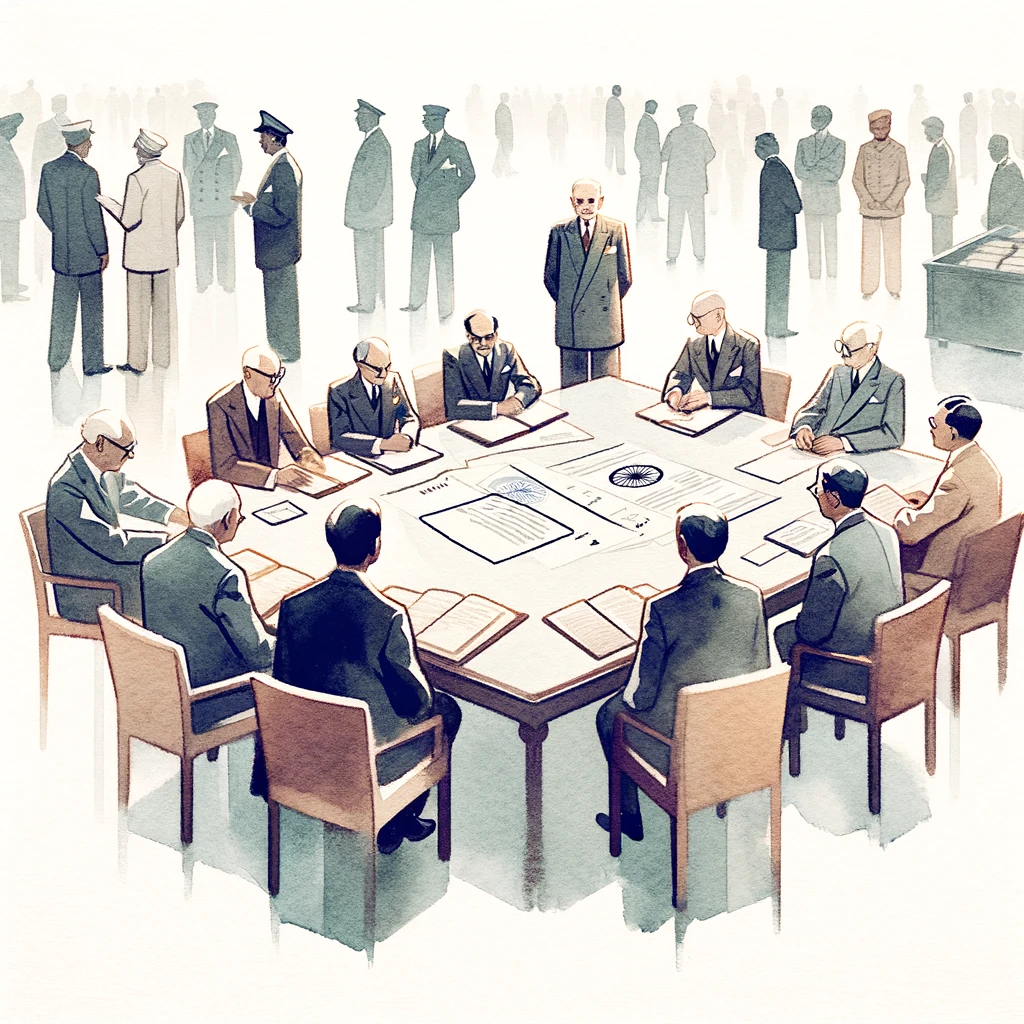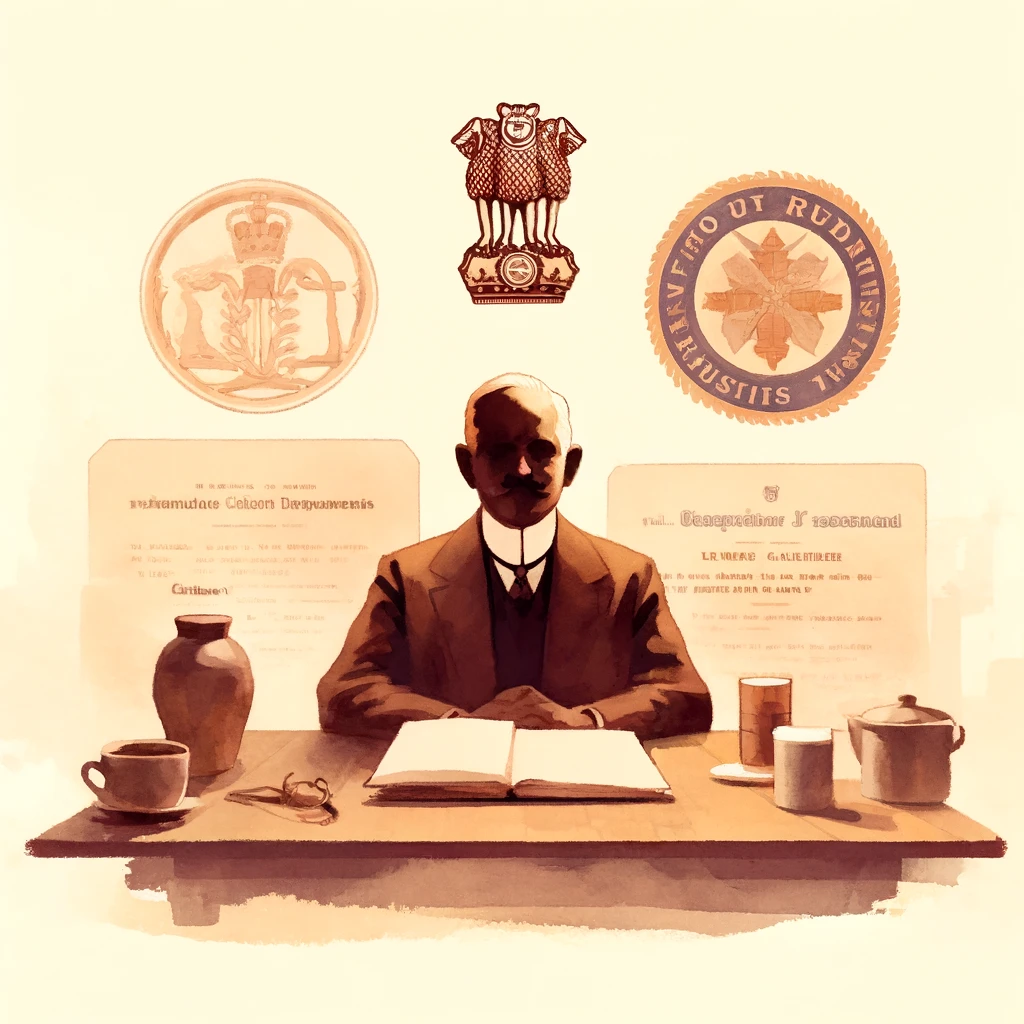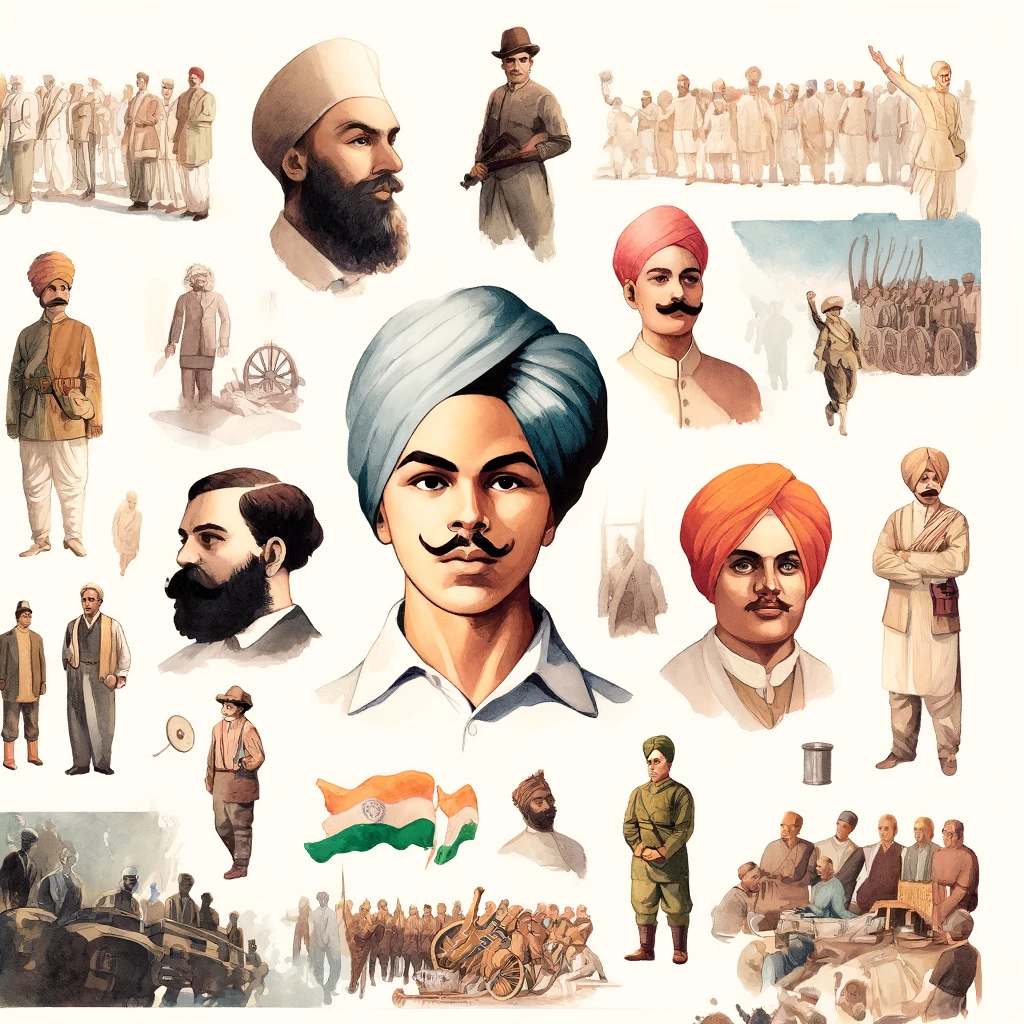Negotiations for Independence
The road to India’s independence was marked by a series of negotiations and plans proposed by the British government to transfer power and address the demands of Indian leaders. These included the Cripps Mission (1942), the Cabinet Mission Plan (1946), and the Mountbatten Plan (1947). Moreover, Each of these negotiations played a crucial role in shaping the final structure of independent India.

Cripps Mission (1942)
Background:
- During World War II, the British needed Indian support to strengthen their war efforts. However, growing unrest and the demand for independence led them to send the Cripps Mission to India in March 1942.
- The mission was led by Sir Stafford Cripps, a senior British politician and a member of the War Cabinet.
Proposals:
- The Cripps Mission proposed to grant India Dominion status after the war, which would give India the right to self-govern while remaining within the British Commonwealth.
- The proposals included the creation of an Indian Union with a constitution-making body composed mainly of Indians. The provinces and princely states would have the option to participate.
- A provision for any province to opt out of the Indian Union and form a separate union was also included.
Reactions:
- The Congress Party rejected the proposals because they did not grant immediate independence and allowed provinces to opt-out, which could lead to the fragmentation of India.
- The Muslim League, led by Muhammad Ali Jinnah, also rejected the mission as it did not provide clear assurances for the creation of Pakistan.
- Consequently, the mission failed, and this led to increased tensions, eventually culminating in the Quit India Movement.

Cabinet Mission Plan (1946)
Background:
- After World War II, the British government, under pressure to resolve the Indian question, sent the Cabinet Mission to India in March 1946. The mission included three members: Lord Pethick-Lawrence, Sir Stafford Cripps, and A.V. Alexander.
Proposals:
- The mission proposed a three-tier structure consisting of a weak central government, provincial governments, and groups of provinces based on religious majorities.
- The central government would control only defense, foreign affairs, and communications, while the provinces would have full autonomy in other areas.
- The proposal included the formation of a Constituent Assembly to draft the new constitution of India, with representatives elected by provincial assemblies.
Reactions:
- The Congress Party accepted the idea of a Constituent Assembly but was opposed to the grouping of provinces on a religious basis.
- The Muslim League initially accepted the plan but later withdrew after disputes arose regarding the interpretation of the grouping clauses.
- Despite the initial acceptance, the differing interpretations and demands led to significant political discord, and the plan did not achieve its goal of a peaceful transfer of power.

Mountbatten Plan (1947)
Background:
- With escalating communal violence and the breakdown of negotiations, Lord Louis Mountbatten was appointed the last Viceroy of India in March 1947. His mission was to oversee the transfer of power and ensure a smooth transition.
Proposals:
- Mountbatten proposed the partition of India into two independent dominions, India and Pakistan, based on religious majorities.
- The provinces of Bengal and Punjab were to be divided along religious lines.
- The princely states were given the option to join either India or Pakistan or to remain independent, though they were encouraged to accede to one of the two new dominions.
Reactions:
- The Congress and the Muslim League both reluctantly accepted the plan, recognizing that partition was the only viable solution to avoid civil war.
- On June 3, 1947, the plan was announced, and it was decided that the transfer of power would occur on August 15, 1947.
Impact:
- The Mountbatten Plan led to the creation of the independent nations of India and Pakistan.
- The partition resulted in one of the largest migrations in human history, accompanied by widespread communal violence and significant loss of life.
- Despite the turmoil, the plan successfully ended British colonial rule in India.
Conclusion
The negotiations for India’s independence were marked by a series of proposals and plans aimed at resolving the complex political and communal issues of the time. The Cripps Mission, the Cabinet Mission Plan, and the Mountbatten Plan each played a pivotal role in the eventual transfer of power. While the Cripps Mission and Cabinet Mission failed to secure agreement among Indian leaders, the Mountbatten Plan’s acceptance led to the partition of India and the establishment of two independent dominions. These negotiations are critical to understanding the final phase of India’s struggle for independence and the birth of modern India and Pakistan.


